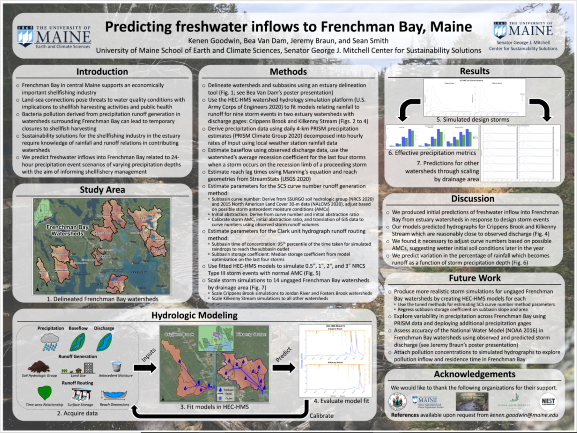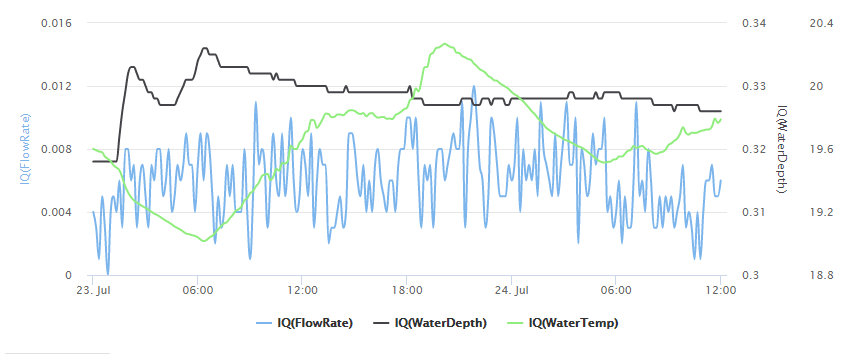Freshwater Flows
The WPES team is involved with the measurement, monitoring, and simulation of stream flows in tributaries draining into coastal estuaries. The flows from rivers and streams provide freshwater inputs to estuaries and can carry pollutants that influence water quality conditions affecting public health, fisheries, and entire ecosystems. The flows also affect estuary hydrodynamics that govern the water quality conditions and aquatic habitat conditions in tidal waters.
The National Water Model [external link] (NWM), produced by the US National Oceanic and Atmospheric Administration (NOAA) Office of Water Prediction, provides a platform for prediction of stream flows from a coupled meteorological – surface runoff model. The model provides short-, medium-, and long-range predictions of discharge for US streams and rivers using empirical methods. The simulation outcomes have potential for use with decision support tools for coastal management by providing a means of evaluating rainfall runoff conditions and a freshwater inflow boundary condition for hydrodynamic modeling in Frenchman Bay sub-estuaries.
WPES researchers have been monitoring stream discharge using sensors that measure water flow velocity and area. Measurements are reported to data loggers and transmitted to a web server to allow real-time access [external link]. The results are used to evaluate stream discharge predictions from the National Water Model, evaluate the relations between rainfall and runoff, and provide boundary conditions for an estuary circulation model.


